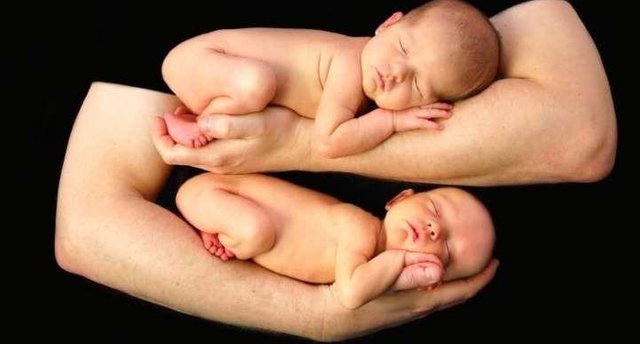Human Cloning, Really Can Be Done? Learn 5 Unique Facts About Cloning.
Human Cloning, Really Can Be Done? Learn 5 Unique Facts About Cloning.

Cloning is the process of extracting genetic information from a living being to create an identical copy of it. Maybe you can imagine clones as color photocopies. Geneticists have succeeded in cloning cells, tissues, genes, and even living animals. Will the future of human cloning be possible to do?
Consider first a number of interesting facts below about cloning that you may never know before.
- Dolly the Sheep is not the first cloned animal in the world
The history of cloning actually began more than 50 years ago. The first cloned animal was a sea urchin in 1880 by a researcher named Hans Driesch.
Going forward a few years later, the first cloned live mammal was finally exhibited to the public eye in 1997. Who does not know Dolly the Lamb? Dolly was actually born on July 5, 1996 in Scotland. Dolly was cloned using a single cell taken from a donor sheep. The Finn Dorset sheep type has a life span of up to 12 years, but Dolly was forced to die in 2003 because of chronic lung disease and premature arthritis. Nevertheless, Dolly's clone sisters: Debbie, Denise, Dianna, and Daisy are still alive today. Seeing the success of Dolly cloning, more and more researchers are competing to create cloned animals. A group of research teams produce cows, sheep, chickens, all of which have identical genetic codes by transferring cell nuclei taken from donor embryos to eggs that have been emptied from the core. In North Korea, researchers successfully cloned a cell from Chase, a prideful retired dog of the country, and produced a team of six powerful dog trackers to work in the police force since 2009.
- Orange is the fruit of cloning
Some plants and single-celled organisms such as baktero produce genetically identical offspring through the process of asexual reproduction. In asexual reproduction, the new individual is produced from the copy of a single cell of the parent organism.
Do you know actually oranges are the fruit of cloning? One orange variety called orange navel has a bulge in the base of oranges, which is similar to a human navel. This bulge is actually the second fruit growth remnant. All the orange navel trees are cloned from each other. The orange navel is not seedless, which means they can not reproduce themselves. That means the orange navel tree just needs to be grafted from one another to create a new tree.
- Cloning results are not always like twins
Cloning does not always look the same. Although cloning shares share the same genetic material with donors, the environment also plays a big role in how organisms eventually form.
For example, the first cloned cat, Cc, is a Calico breed female cat that has a very different appearance to its mother. This is because the color and pattern of cat hair is not directly affected by genetics. The phenomenon of X chromosomal deactivation in female cats (which has two pairs) determines the color of the fur - such as orange, or black and white. The distribution of X chromosomal deactivation that occurs randomly throughout the body then determines the overall appearance of the fur pattern. For example, the cat has a dark orange fur on some sides while also has a white stripe or bright orange all over his body.
- But, twins are the result of human cloning
Human cloning is often said to be impossible to do, at least for the next few decades. But this is not very true. Cloning is essentially an individual who has an identical genetic code. Identical twins are cloned because they share almost identical DNA chains and genetic codes.
Usually, after the sperm and the ovum meet, the fertilized cell begins to divide
- Human cloning, can it be done?
In December 2002, the first human clone, a baby girl named Eve, was claimed to have been created by Clonaid. Clonaid also claimed to have succeeded in creating the first male baby by cloning, whose network was allegedly taken from a child who died in a car accident. But despite being urged by the research community and the media, Clonaid was never able to prove the existence of both the baby and 12 other human cloning that supposedly made.
In 2004, a group of researchers led by Woo-Suk Hwang from Seoul National University in South Korea published a paper in the journal Science where he claimed to have created a cloned human embryo in a test tube. However, the independent scientific committee later found no evidence to support the claim and in January 2006, the journal Science announced that Hwang's paper had been withdrawn.
From a technical standpoint, human cloning and other primates will be more difficult to do than mammals. For one thing, in primate eggs there are two important proteins for cell division known as spindle proteins. Spindle protein lies very close to the chromosomes in primate eggs. As a result, removal of the egg core to make room for the donor core will also eliminate spindle protein. This interferes with the process of cell division.
In other mammals, such as cats, rabbits, or mice, two spindle proteins are scattered throughout the egg. Thus, removal of the egg core does not result in loss of spindle protein. In addition, some dye and ultraviolet rays used to lift the egg core can damage the primate cells and prevent them from growing.
The post Cloning Man, Really Can Be Done? Listen 5 Unique Facts About Cloning appeared first on Hello Sehat.

I tend to believe that Dr. Richard Day actually did spill the beans in 1969. If his revelations are true, it would suggest that this is actually the future of mankind. Fits in nicely with a NWO and Huxley...
https://drrichardday.wordpress.com/
Curated for #informationwar (by @wakeupnd)
Relevance: Knowledge is power.